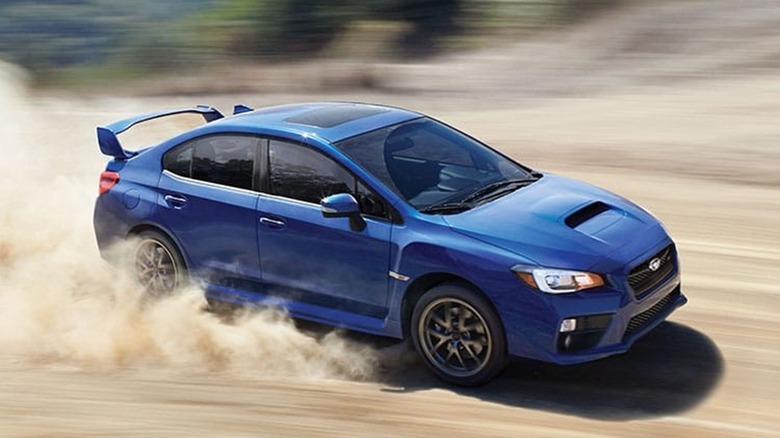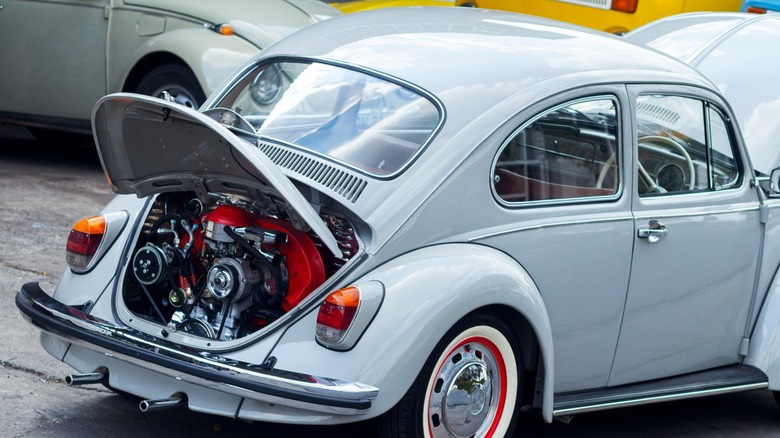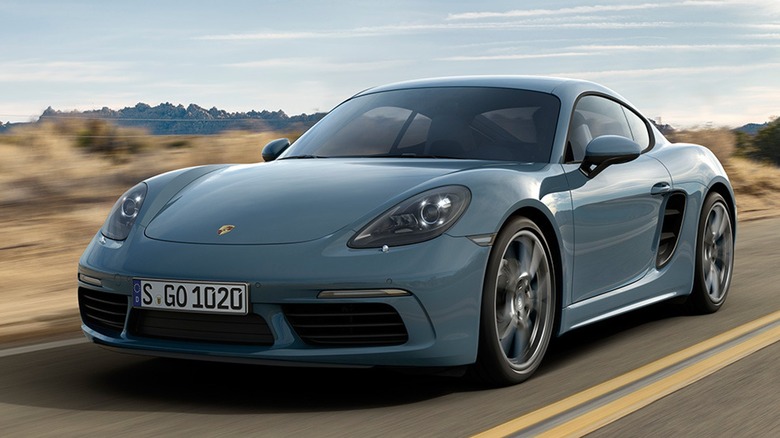What Are H4 Engines & Which Notable Car Brands Have Them Under The Hood?
H4 engines are horizontally opposed four-cylinder engines also commonly known by names like flat-four and boxer. For comparison, most four-cylinder automobile engines are upright inline designs. The boxer engine design dates back to the late 1880s when Karl Benz (yes, the same Benz recognized as the inventor of the first ever car) developed the Contra engine. The Benz Contra was a horizontally opposed two-cylinder with its pistons reaching the top of their stroke at the same time. Some of the other earliest automobiles to use the H4 engine design include examples from England's Wilson-Pilcher company in the early 1900s and Tatra, a Czechoslovakian automaker, in the late 1920s.
The H4 boxer engine design has several benefits. The most significant advantage of the flat-four design over inline four-cylinders is its lower center of gravity. The opposing cylinder layout also uses the offsetting counter-punch rhythm of the pistons to minimize vibration without needing additional components. Finally, the engine's low position in the front engine bay reduces the likelihood of it entering the passenger area in a frontal crash.
Many notable car brands have used the H4 engine
Perhaps the most popular automobile to use the H4 engine design was the legendary Volkswagen Beetle. The air-cooled flat-4 VW Beetle owes its origins to a Ferdinand Porsche design from the 1930s. However, the U.S. had to wait until 1949 to see the first VW Beetle on its streets. Porsche later used the H4 engine in the timeless 1948 Porsche 356. In 1953, Porsche developed the 550 Spyder for its racing efforts. The mid-engine, aluminum-body Spyder's flat-four engine used four camshafts to make 110 horsepower — more than double the original 356 engine's output.
Subaru adopted the H4 boxer engine in 1970 for use in its FF1 sedan, a replacement for the automaker's first, and worst, car. The Subaru FF1, also known as the 1000, used an H4 engine with a 1,000cc displacement that produced up to 81 horsepower. The J4 boxer went on to become nearly synonymous with the Subaru brand, and the company continues to use the boxer design today.
You'll also find an H4 boxer under the hood of at least one vehicle from Toyota. The Toyota GR86 is the result of a joint effort between Toyota and Subaru, so naturally, it features the Subaru H4 engine design. The 2.4-liter H4 in the GR86 makes 228 horsepower and 184 lb-ft of torque.
Which car brands still use H4 engines?
Subaru, of course, still uses the H4 engine design in its internal combustion engine vehicle lineup. Some of the most reliable Subaru engines include the EJ/FB20, EJ22, EJ/FB25, FA20, and FA24D.
The 2.0-liter EJ20 and 2.5-liter EJ25 engines found in various Subaru vehicles, including Legacy, Impreza, and Outback models since 1989, were succeeded by the FB20 and FB25 in 2010. Perhaps the most reliable Subaru boxer engine is the EJ22, a 2.2-liter variant lasting up to 500,000 miles in some 1990s Legacy and Impreza models. Finally, the FA20 and newer FA24, both developed in partnership with Toyota and used in Subaru BRZ, WRX, Legacy, Forester, and Outback models, feature upgraded internals and more power than their predecessors.
Porsche is another automaker currently using the H4 boxer engine design displacing either 2.0 or 2.5 liters. The 2024 Porsche 718 Cayman and 2024 Porsche 718 Boxster, two affordable Porsches destined to become classics, come with a turbocharged 2.0L H4 that produces 300 hp and 280 lb-ft of torque but offer an optional turbocharged 2.5L H4 with 350 hp and 309 lb-ft of torque. Interestingly, Porsche also uses a six-cylinder boxer engine in some of its upper trim cars.


